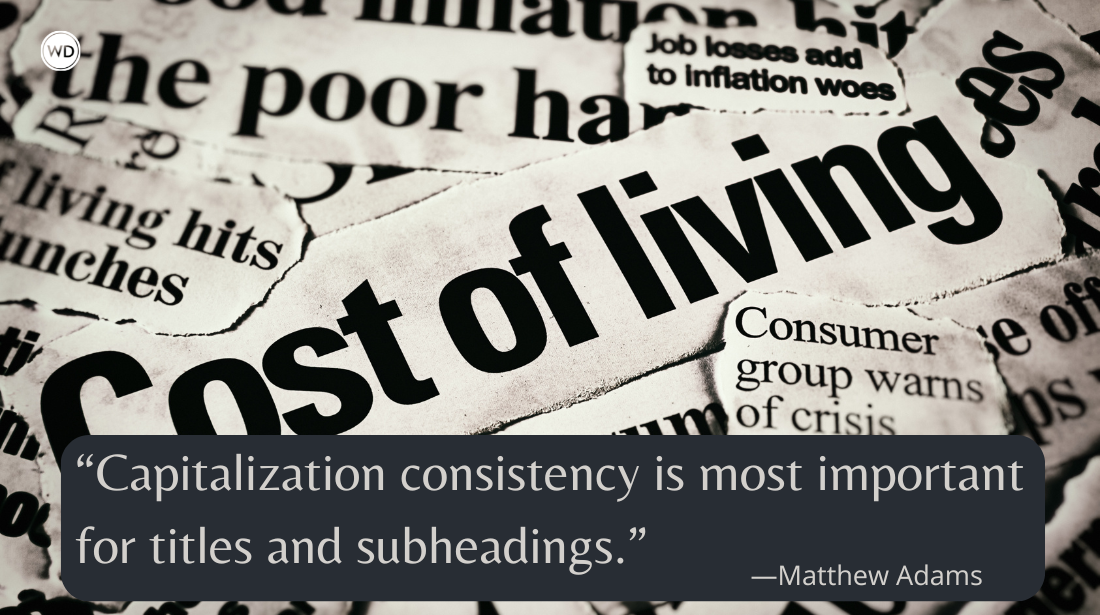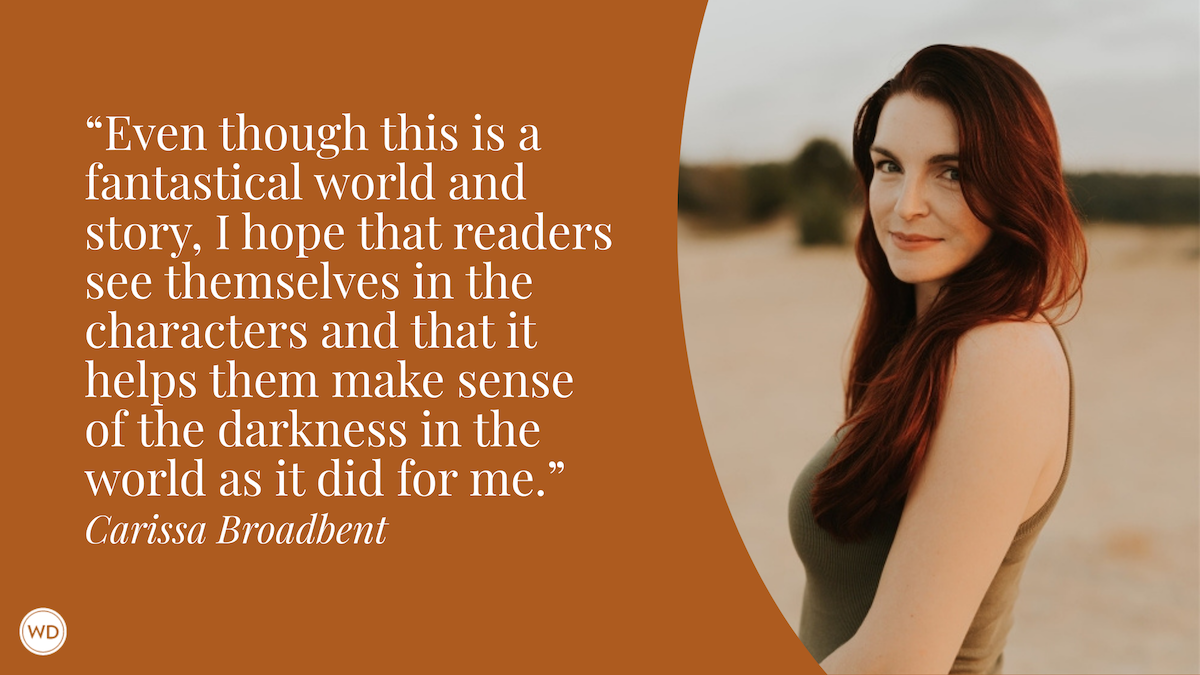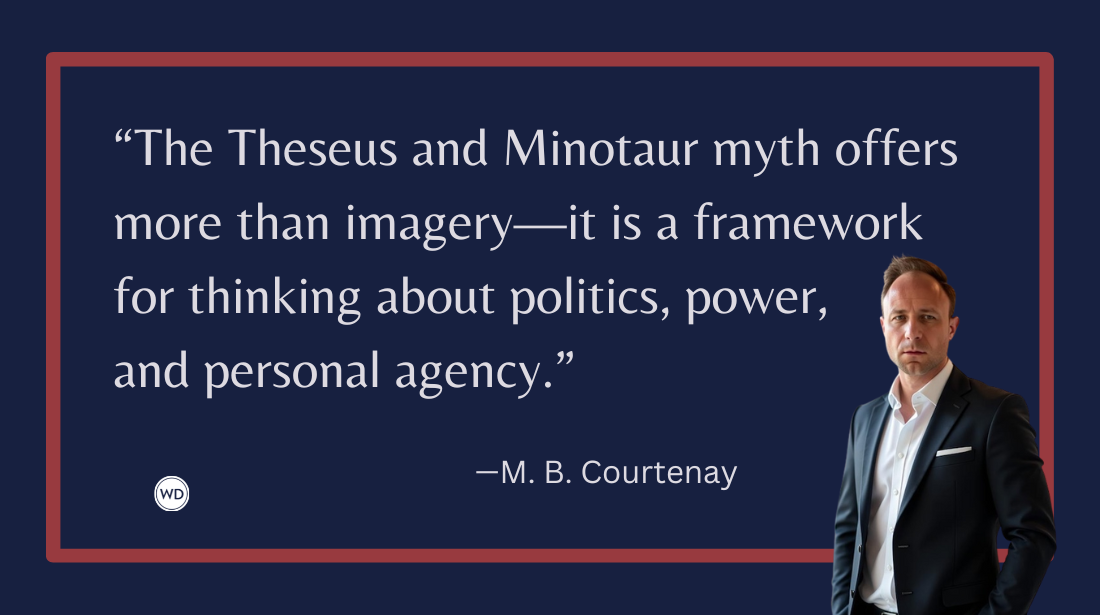How to Add Tension to Your Thriller
Award-winning author Dick Lochte shares strategies for adding tension to various types of thrillers, including action, crime, and more.
What do Agatha Christie and Robert Ludlum have in common? Or Thomas Harris and Daphne du Maurier? Or Stephen King and Gillian Flynn? The obvious answer is that they are all novelists. What’s not so obvious is that their successful novels fall under the category of thriller. Each may bring a different flavor to the genre, but all have understood what controls a thriller’s heartbeat—tension.
So how do we create tension? That depends on the type of thriller. For example, the new novel that William Webster and I wrote, Rockets' Red Glare, like the Jack Reacher and Jason Bourne books, falls under the Action Thriller heading. Its protagonist, Sage Mendiluze, a former U.S. marine serving as a tribal police deputy on Wyoming’s Wind River Indian Reservation, gets caught up in the hunt for killers who are murdering their way through U.S. national parks. As is typical for this sub-genre, its core themes include survival and justice, both of which provide opportunities for high pressure moments when the hero must battle man and nature, assassins and wilderness.
The use of a personal motive can add fire and fuel to those moments. The late Robert Ludlam’s Jason Bourne series begins with Bourne surviving a murder attempt but suffering from amnesia (an excellent start for a thriller, though by now a bit unoriginal). As his memory returns, he begins a quest to find those responsible for his situation.
The way Ludlum (and those who’ve continued the series after his death) chart Bourne’s progress, momentarily impeding it by increasingly perilous roadblocks, can serve as a master class in creating tension. Like any good Action Thriller, the Bournes show how to construct anxiety-driven suspense: Part of it is keeping a bullet-fast pace, part is constructing a goal for your protagonist that is monumental enough, the stakes high enough, to be worth the effort. It helps if the pending cataclysmic disaster has at least a hint of reality. Intense physical action is at the forefront—fights, chases, shootouts, explosions—along with direct conflict that places its lead in ultimate danger.
It’s important that protagonists of these novels be mainly skilled or resourceful. They can be a professional lawman, like our Sage, a spy like Bourne, or an average man or woman drawn into an extreme situation. In the case of the latter, it helps if they possess a weapon they may or may not know about. In James Grady’s Six Days of the Condor, protagonist Ronald Malcolm, a low-grade CIA employee who spends his days studying plots of mystery and spy novels, suddenly finds himself on the run from assassins and his CIA bosses. If he has no chance of survival, the suspense level craters. But the information from those novels he’s read provides him with a resourcefulness he was unaware of, Ronald’s story opens up, and we’re treated to him hacking past perils, each success upping the thrill quotient.
Antagonists in Action Thrillers should be formidable enough to create a sense of real threat (e.g., terrorists, assassins, criminal masterminds). Tension can be intensified by a sample of their savage brutality, such as finding amusement in torture or casually killing an associate.
The plan here is to keep the reader on edge with uncertainty, twists, and threats, time-sensitive dangers being the most effective, especially at a chapter’s end. Momentum chaining is another way of adding to the anxiety: Your hero’s progress is halted by a wall; he gets around it or over it and discovers … a bigger wall. There are no clean wins. Stress comes from events that may be as frustrating as they are dangerous. A gun jams. A car won’t start. The villain is in sight but for some reason the hero can’t get to him. There’s the unforgettable scene in the film The French Connection when the wealthy French heroin dealer, speeding away on a subway, gives a finger wave to the furiously frustrated New York cop Popeye Doyle left standing at the terminal. The other takeaway from that classic film is the frantic car chase which could be nearly as breathless on page through the use of short, punchy sentences and feverish pacing.
Locations for the Action Thriller should create their own tension, often playing out in threatening places—a shadowy, long-vacant theater, a creaking, wooden bridge, a dark alley, a private plane fighting a windstorm. As in chase sequences, these high-intensity scenes should be written with fast, sensory beats—flashing sights, sounds, touches. Dialogue and thoughts should be kept at a minimum, the better to mimic an adrenaline rush.
Psychological Thrillers, like those by Gillian Flynn or Dennis Lehane, require a different approach. They usually find their potential for tension less in physical combat than in the mindset of the protagonists. This category emphasizes the unstable or delusional mental and emotional states of characters—often blurring the line between reality and perception. The tension comes from mind games, manipulation, and internal conflict, though the threat of physical danger should not be ignored.
In these novels, suspense is usually slow building as opposed to the Action Thriller’s relentless pacing. The surprises and twists mainly come from psychological revelations or from the question of fantasy versus reality. The goal is to try and create the kind of tension that builds when a balloon is blown up past its point of safe elasticity.
Flynn’s twisty Gone Girl, with its missing, probably murdered wife and her apparently puzzled husband, at first seems to be heading toward a “he said/she said” situation, but evolves into something quite different. More like “is he lying/or is she lying?” Or even “are they both lying?” At first the author builds pressure by using friends and clues to increase a belief in the husband’s guilt, then does a switch by letting the reader know the wife is alive. Flynn follows that not by lessening stress but increasing it by placing the wife’s safety very much in question.
For an example of suspenseful self-doubt, crack the cover of Dennis Lehane’s Shutter Island, a book whose title has its own chilling effect. In it, U.S. Marshal Teddy Daniels ferries from Boston to an isolated island hospital for the criminally insane, presumably to investigate the disappearance of a patient, a woman found guilty of drowning her children. Everything on the gothic island has a dreamlike—make that nightmarish mood disturbing enough to keep the drowsiest of readers wide awake. No surprise that the hospital’s prisoner-patients are weird. But the doctors are, too, and Teddy discovers they may have been experimenting with mind-altering drugs. As the book progresses, Teddy’s increasingly disturbing investigation magnifies the tension. But are the terrors he is experiencing real or have those drugs found their way into his bloodstream? Or is there a third even more shocking explanation?
In the Crime Thriller, some protagonists are professionals—like Michael Connelly’s honorable man of the law Harry Bosch, or Stephen King’s empathic and brilliant Holly Gibney, a supporting player in her first four novels so beloved by her author that he has continued her career as a unique Private Investigator top-lining a novella and two novels, the current one being NEVER FLINCH. The category also includes lawyers, reporters, coroners, doctors, even criminals—anyone whose occupation places them in the near proximity of anti-social behavior.
Also included are antiheroes like Jeff Lindsay’s police tech and homicidal avenger Dexter Morgan or Thomas Harris’ convicted cannibal with a moral streak, Dr. Hannibal Lecter. Their books use detailed descriptions of their horrific crimes to achieve tension. The murders in Harris’ Red Dragon may be the most terrifying ever put on paper.
The setting for Crime Thrillers is usually urban and gritty, the mood so dark that even “good” characters are open to compromise. As for creating atmosphere, try the heavy use of smoke and shadows, pelting rain, flashing neon—an external environment that mirrors the internal despair of the characters. The tension level rises with the knowledge that anyone can fail. Procedural investigations that seem promising usually twist into darker dead ends. One surefire way of extending the suspense: Let the lead’s wrong choices continue to narrow until they are trapped.
How does the crime novel fulfill its suspense potential? One way is for its lead, attempting to restore justice, or caught up in a cat-and-mouse situation, or involved in a complex heist, to be faced with a conflict that is surprising and probably fatal. (One of the great Raymond Chandler’s suggestions: “When in doubt have a man come through the door with a gun in his hand.”)
Amateurs also fall into this type of thriller. Perhaps most popular of them all is Agatha Christie’s Miss Marple, as empathic and keenly observational as King’s Holly but who has the deceptive appearance of a kindly small-town spinster. The crimes that surround her and others in her knitting circle usually take place in sunlit, otherwise peaceful villages or suburbs. The thrills and chills come from the discovery of corpses, clues, unique murder weapons, and the odd, menacing behavior of an array of smarmy suspects. The ultimate breathless moment in these mysteries is saved for the chapter near book’s end when all suspects are gathered and the secret villain is outed.
Miss Marple and her cozy cohorts rarely face danger, but there is another type of amateur who does, the woman-in-jeopardy. Her surroundings may be less comfortable than Miss Marple’s but her situation is more suspense-centric. The unnamed young woman in Daphne du Maurier’s ever-popular Rebecca is a classic case in point. Married in haste, she finds herself in a moody mansion haunted by the ghost of her husband’s first wife.
In books like Rebecca, mood is the key. They usually play out in vaguely musty, shadowy rooms and corridors, made even more unnerving by the sounds of a moaning house with thunder and rain tapping against windows. To amplify the chills, add one of those windows suddenly being thrown open by a rush of wind. Have a troubled sea crash against a nearby cliffside. And if you want to complete the job, throw in a howling dog.
Every thriller is different, or should be. And these are only a few of the ways to spike suspense. But if there is one universal ingredient that works no matter what type of thriller you’ve chosen to write, it’s the "Oh no!" moment. That’s when you let your reader know that something very dire is about to happen just before your leading characters find out. It’s when the private eye turns his or her back on the wrong person. Or the good thief fails to see the alarm trigger. Or the curious young woman reaches out to unlock the mysterious room.
That slow dreadful sense of impending doom is pure suspense gold.
Check out Dick Lochte's Rockets' Red Glare here:
(WD uses affiliate links)









